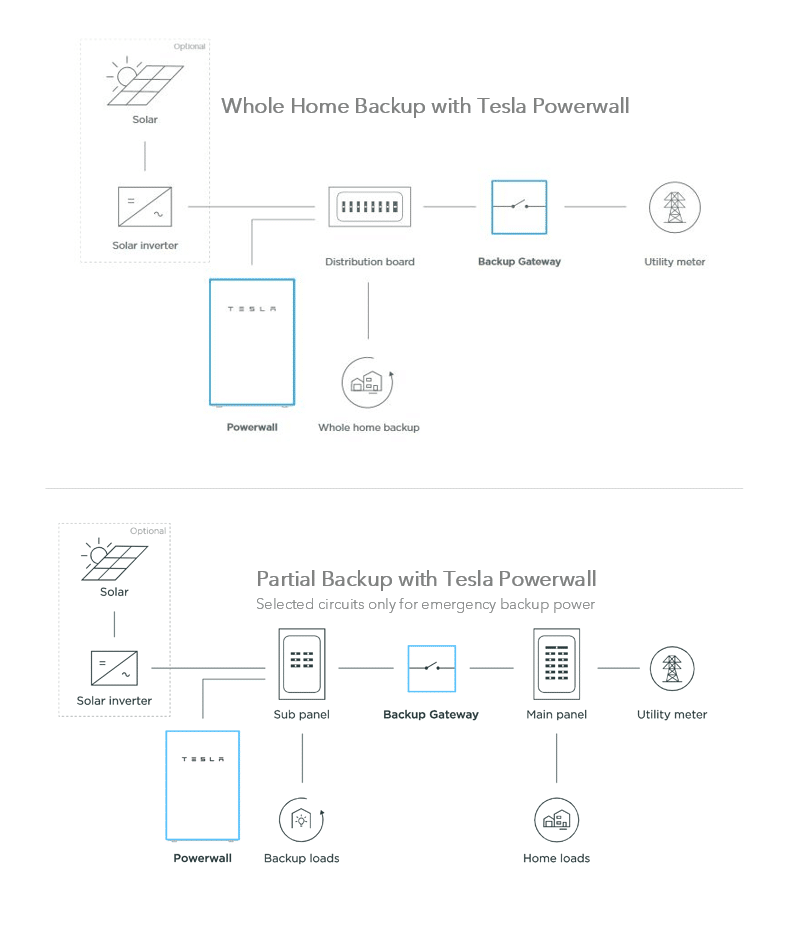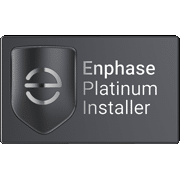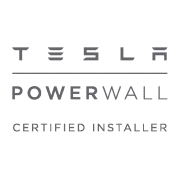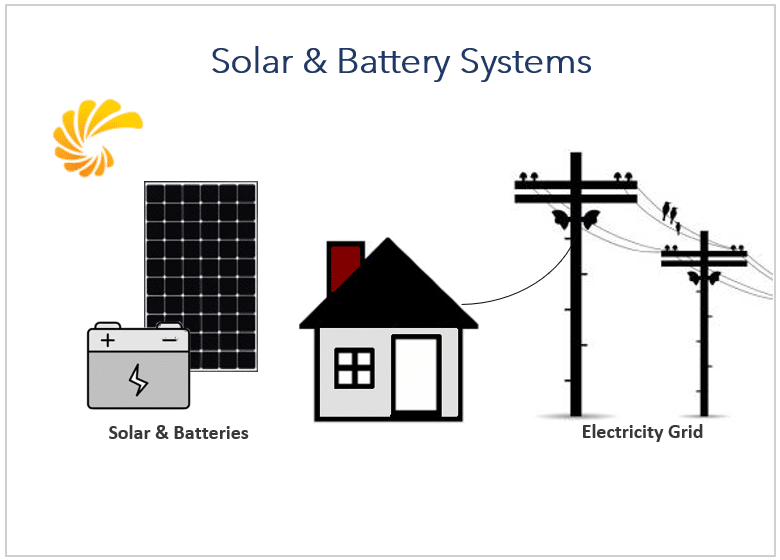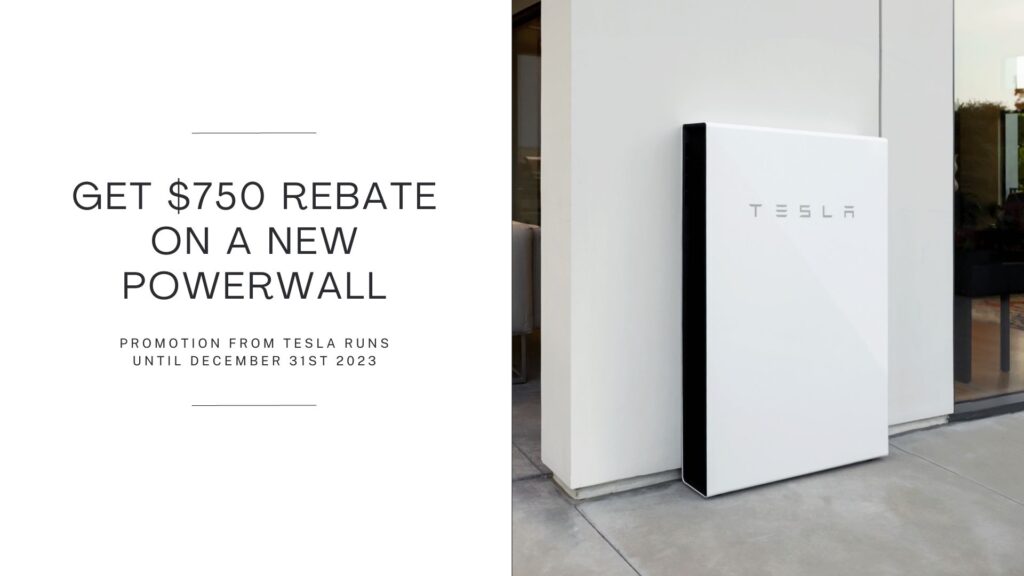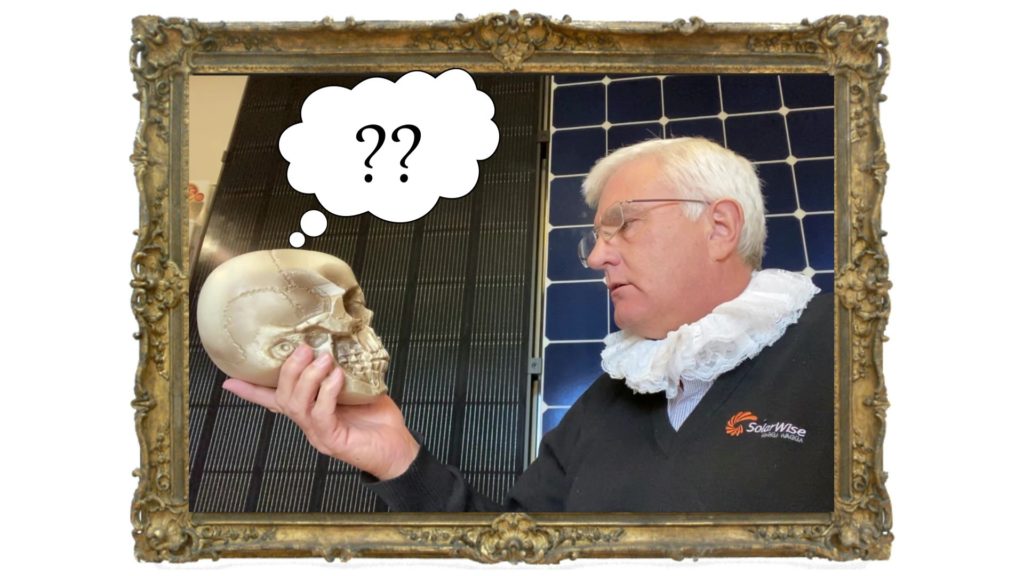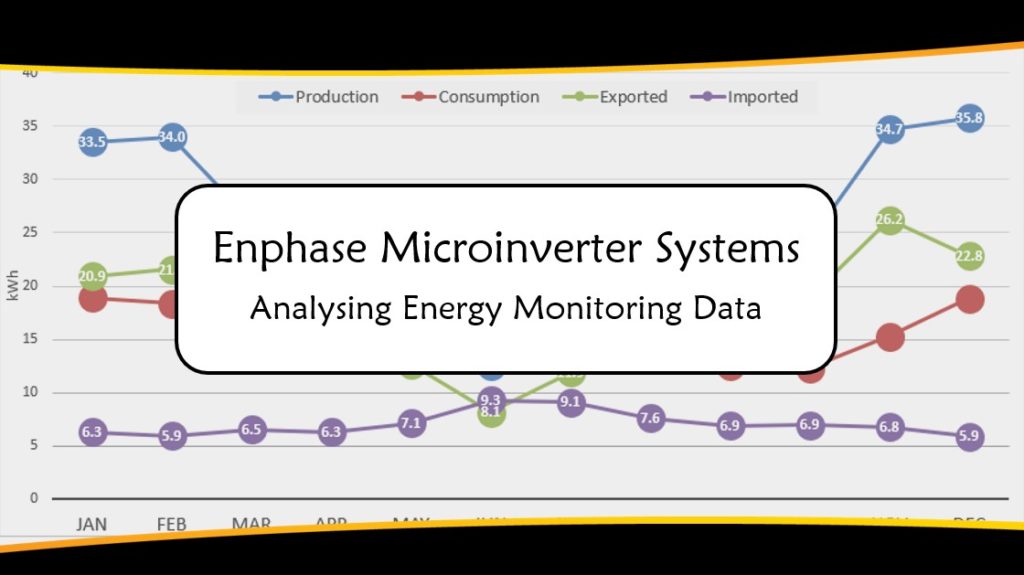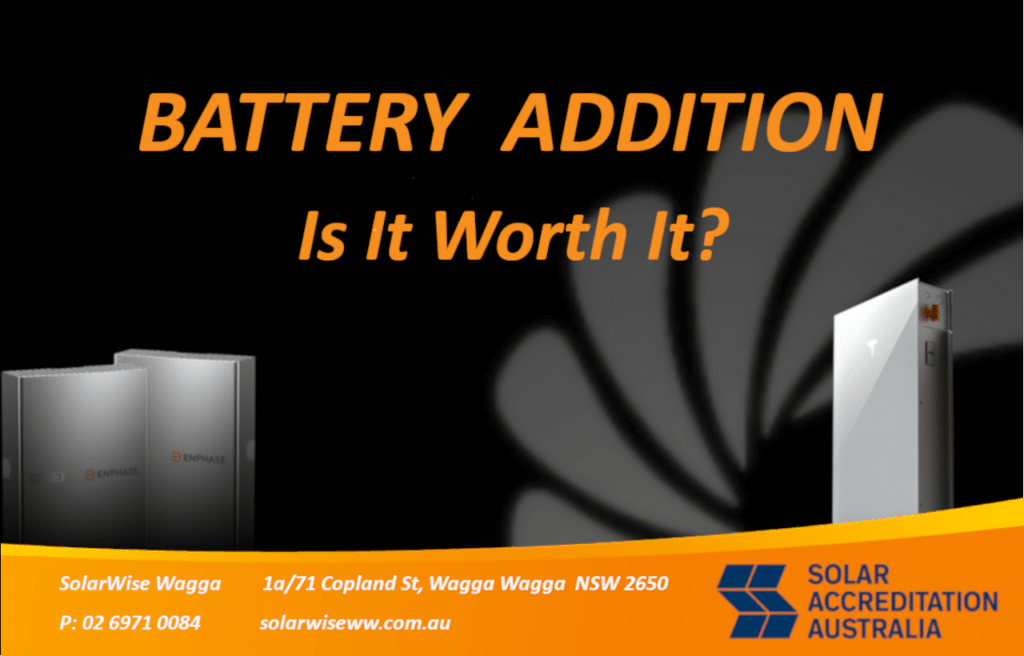

As the cost of solar battery storage continues to decrease, battery storage is becoming more attractive for solar power system owners looking to save money on their electricity bills.
Even though the cost of adding batteries has gradually reduced, they still require a significant financial investment. There are also a few other non-economic reasons why people are choosing to install batteries for solar energy storage.
For example:
• to provide blackout protection – backup power
• early adoption of new technology
• a desire to reduce reliance on grid power
• a need for peak load management
Solar energy storage refers to the capture of energy produced at one time for use at a later time.
System owners can use batteries to store solar energy generated by solar power systems during the day for use during the evening or when solar production is lower than energy consumption.
The use of energy storage can increase energy independence, increase self-consumption ratio, and improve the ROI of the solar PV component of a solar power system.
Rather than export all your surplus solar energy – store some of it in a battery instead.
A typical home has high energy use in the mornings and evenings but solar generation is highest during the middle of the day. Without an energy storage battery, the only thing to do with unused solar energy produced during the peak production period is to sell it to the grid, usually at a comparatively low rate. (Feed-in tariff, FiT)
A home battery allows you to store solar energy and use it later when you need it, thus, increasing your rate of solar power self-consumption.

A typical household energy usage profile
Storing spare solar energy production in a battery means you can use it later during peak tariff times, or in the evening instead of purchasing all your night-time energy needs from the grid.
Self-consumption refers to a home or business using the electricity generated by its own solar power system. A higher rate of self-consumption can increase the solar PV system’s ROI.
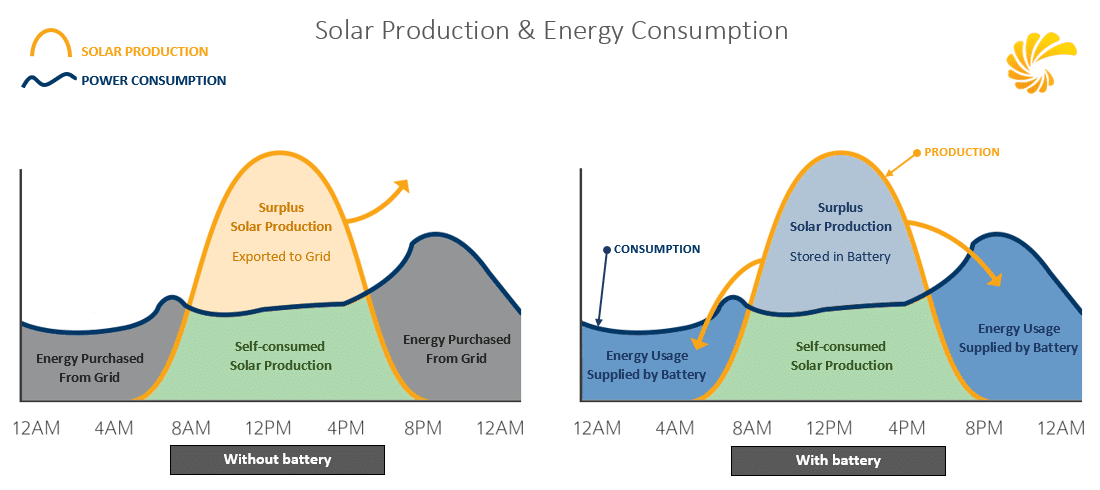
Vehicle accidents, storms, bushfires, or other natural disasters can cause an unexpected power blackout which can impact your family’s safety and security.
With an energy storage system that has backup power functionality, you can supply your home with emergency power during an electricity grid blackout.
Distribution Network Service Providers (DNSP), for example Essential Energy, will sometimes stipulate a grid export limit for a solar power system as part of the grid connection approval process.
This means that there is a maximum level of power (kW) that is allowed to be sent to the grid at any moment.
Export limitation is becoming more prevalent recently, particularly with larger capacity systems.
Charging a battery with power that would otherwise be sent to the grid will allow for increased system output in a situation where the surplus production has reached the level of the export limit but the system could potentially be producing more.
Tip: The use of an Energy Diverter to send solar power to an electric hot water system is another method of mitigating potential production loss from export limitation.
Energy stored in batteries can be used to supply electricity during times of peak demand.
These next two uses for battery storage have similar methods, but each has a different purpose.
Maximum Demand based electricity supply tariffs are used in some commercial and industrial applications.
Electricity can be supplied from battery storage when peak energy demand exceeds the supply tariff limit.
When the demand reduces, batteries will be recharged ready for the next peak demand event.
Sometimes the electrical load connected at a site can exceed the level that the grid infrastructure was originally designed for, and increasing the grid supply capacity can be very expensive, particularly in rural areas.
Electricity can be supplied from batteries during peak periods when the electricity demand exceeds the grid supply capacity limit.
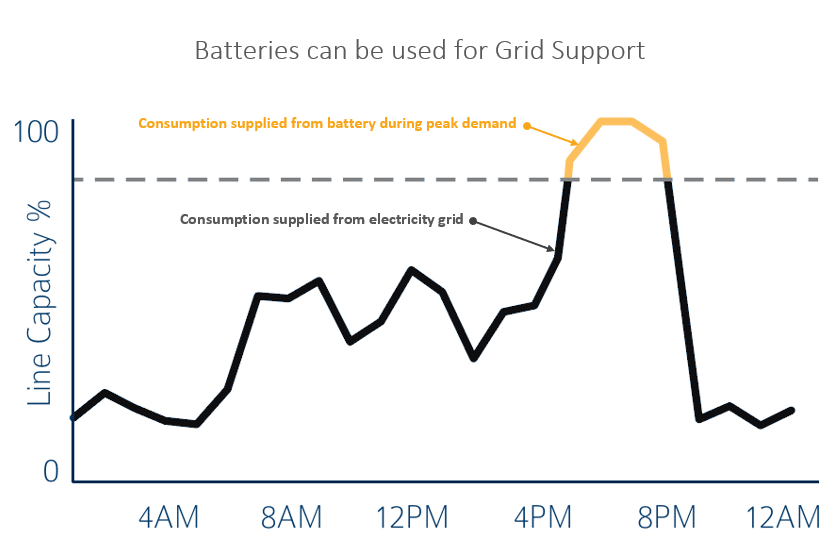
Solar power systems that have battery storage can be broadly classified into 2 main types.
Off-Grid systems (Stand-Alone) and Hybrid (Grid connected systems)
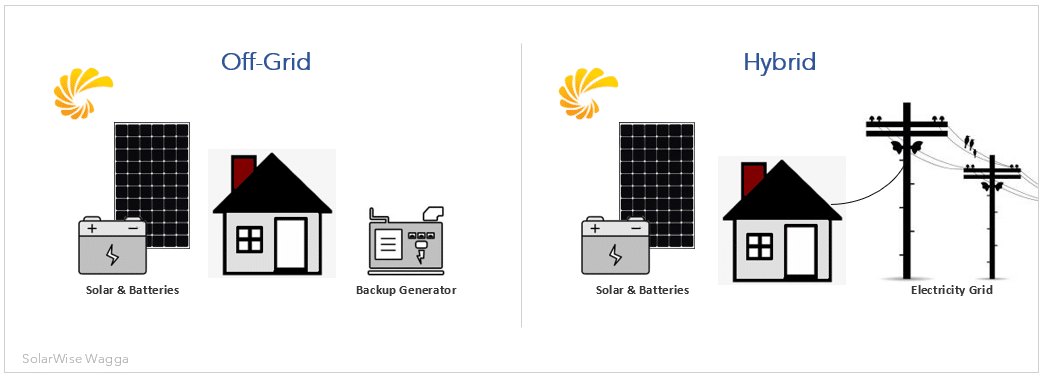
As the name suggests, this type of system has no connection to the electricity grid.
All the electricity is produced by solar panels, and occasionally a backup diesel generator if required.
Off-grid or Stand-alone Power Systems (SAPS) require specialised off-grid inverters and chargers, along with a larger battery bank capacity compared to a grid-connected hybrid system, therefore they require a substantial higher financial investment.
Off-grid power systems are economically viable in rural or remote areas where the cost of extending the grid network to a property can be very high.
Hybrid systems are connected to the electricity grid.
The use of electrical energy that has been stored in batteries is prioritised over purchasing from the grid.
Likewise, solar production that is not used directly by appliances (excess) is used to charge the battery as a priority, and only sent to the grid when the battery is full.
This page is primarily about Hybrid solar power systems.
For Off-grid power system information, please visit the pages at the links below.
► Off-grid solar power – Introduction
► Off-grid solar power system information
A solar inverter converts DC power from the solar panels into AC power which connects to the switchboard.
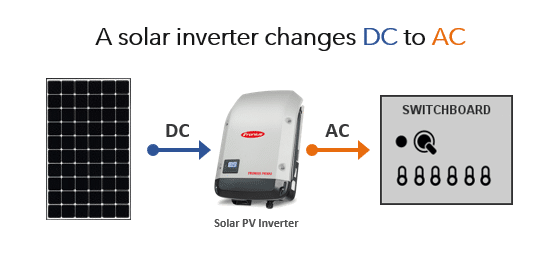
There are two ways that batteries can be connected in a Hybrid system.
This is called battery coupling, and refers to where the battery is connected in relation to the inverter – whether it is on the DC side or the AC side.
There are advantages and disadvantages for both DC coupled & AC coupled connections.
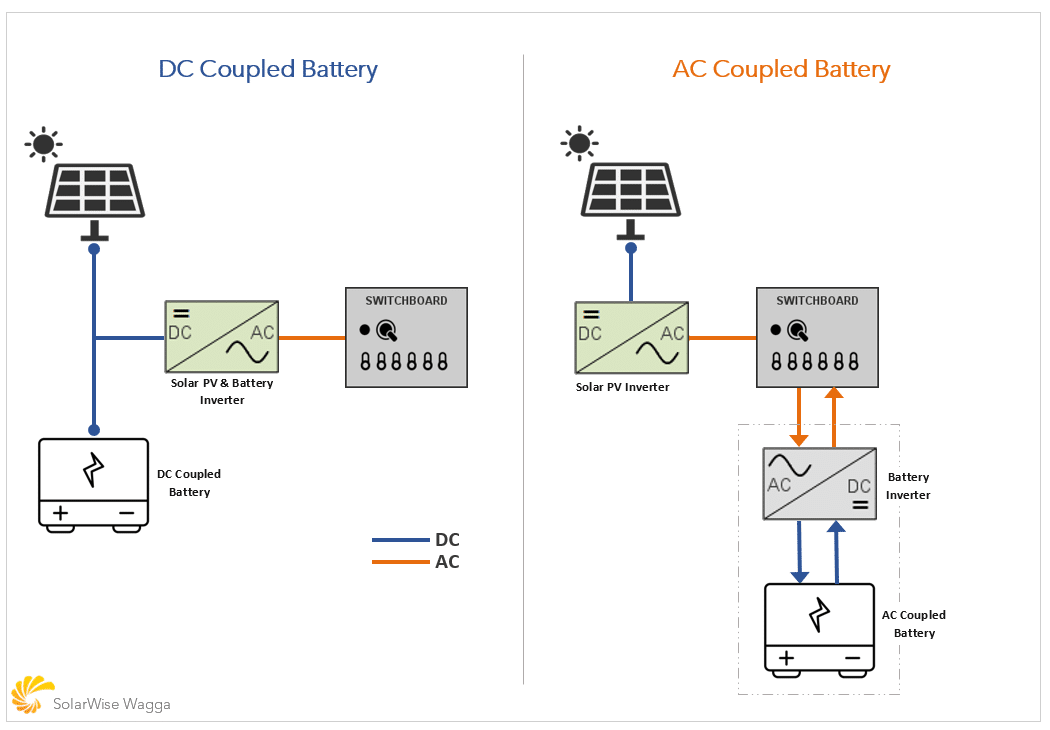
It is a common misconception that having solar power will keep your house powered during an electricity blackout, however, this isn’t always the case. Standard grid-connected solar power systems must shut down and disconnect from the grid during a power outage for safety reasons.

For a solar power system to provide power during a blackout, it will need to have a battery and also backup power capability.
Not all battery storage systems have blackout protection. Furthermore, only selected circuits such as lights and power points are supplied with backup power in most cases, as opposed to the whole house.
Whole house backup is possible with larger capacity battery systems, but this requires careful management of electricity use during a blackout to avoid emptying the battery too quickly.
This is a feature that some systems have that allows the battery to be programmed to keep a certain amount of energy in reserve for use in the event of a blackout.
For example, you could keep 40% battery capacity in reserve for a blackout and use 60% capacity for regular night time use.
Backup power functionality can add complexity and cost to an energy storage system, and may also require some re-wiring of the electrical switchboard to separate backed up and non-backed up circuits.
